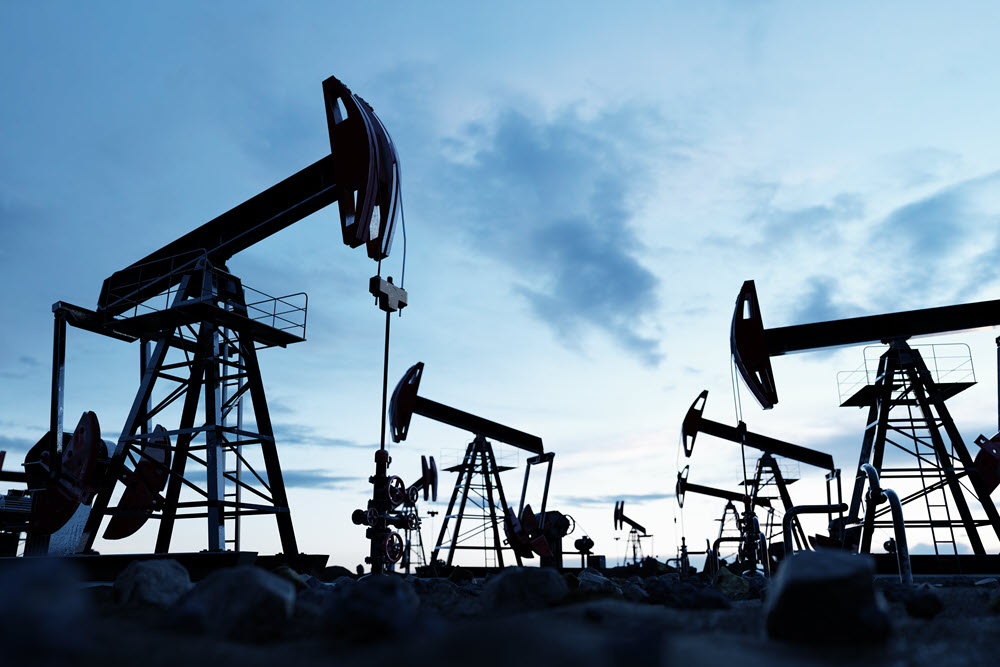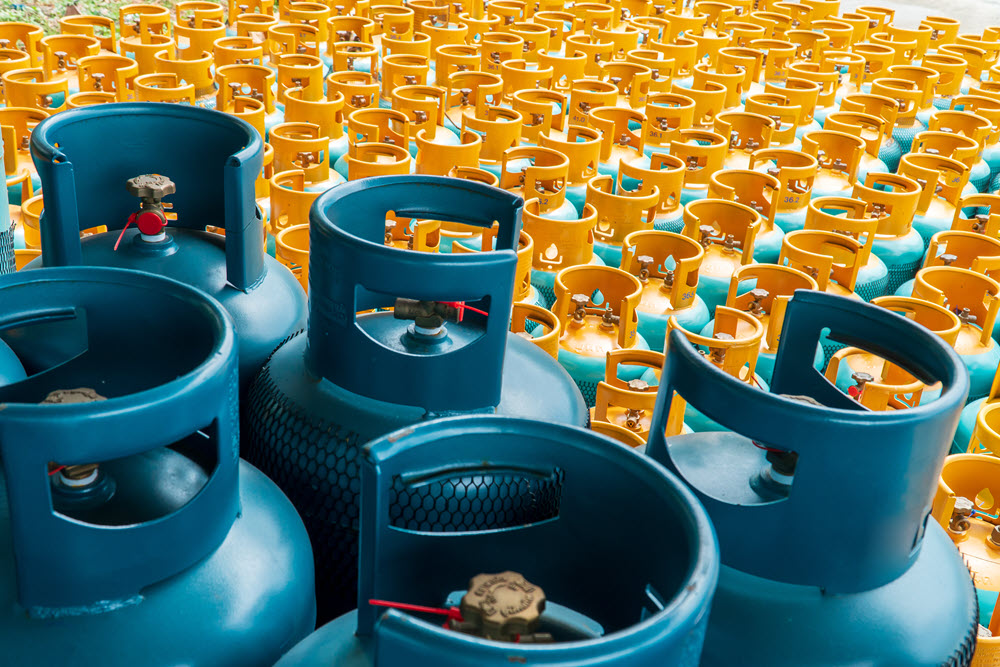Oil & Gas
Sector
Energy Projects
Invest in the lifeblood of Iraq’s economy. The oil and gas sector in Iraq presents significant growth opportunities. Our in-depth knowledge of this industry, its laws, regulations, and the unique challenges it poses, provides you with the necessary guidance to navigate and thrive within this lucrative sector.
Important Figures

Oil & Gas reserves
145 billion barrels (13th globally) 142 trillion cubic feet (9th globally)

Oil production
4.5 million barrels per day (7th globally)

Gas production
42 billion cubic feet per day (12th globally)
Iraq is a country with a rich history and culture, and it is also one of the world’s most oil-rich countries. This makes Iraq an attractive destination for foreign investment in the oil and gas sector. Let’s explain why.

Oil Sector
According to the U.S. Energy Information Administration (EIA), Iraq is the second-largest crude oil producer in OPEC after Saudi Arabia. It holds the world’s fifth largest proved crude oil reserves, at 145 billion barrels, representing 17% of proved reserves in the Middle East and 8% of global reserves. Most of Iraq’s major known fields—all of which are located onshore—are producing or are in development.
Iraq’s crude oil production grew by 1.7 million barrels per day (b/d) from 2013 through 2019, and it averaged 4.7 million b/d in 2019, an all-time high over a year.
In 2020, Iraq’s crude oil output fell to less than 4.1 million b/d. Iraq voluntarily reduced crude oil output in the second quarter of 2020 to comply with the OPEC+ agreement. Because the OPEC+ members are reversing the significant production cuts made in 2020, Iraq’s crude oil production rose to an average of nearly 4.4 million b/d in the first half of 2022.
These production estimates include crude oil produced in the semi-autonomous northeast region in Iraq governed by the Kurdistan Regional Government (KRG).

Gas Sector
Iraq consumed an estimated 2 quadrillion British thermal units of total primary energy in 2021, making it the fourth-largest energy consumer in the Middle East behind Iran, Saudi Arabia, and the United Arab Emirates.
Natural gas and oil accounted for almost all of Iraq’s total primary energy consumption; hydropower and solar energy contributed marginally. Iraq will continue to mostly use oil to meet demand until it develops more natural gas processing capacity and pipeline infrastructure.
At nearly 131 trillion cubic feet (Tcf), Iraq’s proved natural gas reserves at the end of 2021 were the 12th largest in the world. The majority of Iraq’s natural gas reserves are associated with oil, and most of the associated natural gas is located in large oil fields in southern Iraq.
After reaching a record-high 378 billion cubic feet (Bcf) in 2019, Iraq’s dry natural gas production fell to 328 Bcf in 2020. Production cuts from Iraq’s oil fields in early 2020, following the OPEC+ agreement, lowered associated natural gas output. In 2021, natural gas production returned to about 353 Bcf as Iraq’s associated gas began to return to production. Iraq consumed 650 Bcf of dry natural gas in 2021, much of which the electricity sector consumed.
Why Invest in Iraq’s Oil and Gas Sector?
Here are compelling reasons why foreign investors should consider Iraq’s oil and gas sector:
-
Expansive Market
Iraq’s oil and gas sector presents an expansive and expanding market. By 2025, the country’s oil production is predicted to hit 5 million barrels per day, and by 2030, its gas production should reach 10 billion cubic feet per day.
-
Governmental Backing
The Iraqi government demonstrates strong commitment to advancing the oil and gas sector. It has implemented several laws to invite foreign investment and provides attractive terms to foreign investors.
-
Investment Opportunities
For foreign investors keen on Iraq’s oil and gas sector, numerous opportunities abound. These include the development of new oil and gas fields, investment in exploration, and the provision of technical assistance and expertise.
-
Natural Resources
Iraq’s natural resources are abundant, including oil, gas, and minerals. These resources can finance oil and gas projects and generate government revenue.
-
Strategic Location
Iraq enjoys a strategic location in the Middle East, making it a pivotal transit hub for trade and commerce.
-
Young, Growing Population
Iraq’s youthful and burgeoning population will provide a large workforce for oil and gas projects.
Our Services at USPC Group
At USPC Group, we offer customised solutions tailored to the specific needs of investors in the oil and gas sector:
Investment Guidance: We guide investors through the process of identifying and capitalising on investment opportunities, such as the development of new oil and gas fields and investing in exploration activities.
Technical Expertise: We offer technical know-how to ensure the highest standards in project implementation and operation.
Government Liaison: We facilitate seamless interaction with the government, ensuring alignment between your projects and the broader goals of Iraq’s oil and gas sector.
Market Analysis: We provide market insights, including current trends, future projections, and the regulatory environment, to facilitate informed decision-making.
Post-Investment Support: Our support extends beyond the initial investment, offering continued assistance through project monitoring and consultation.
Networking Opportunities: We connect investors with others in the field, fostering collaborations that can enhance project outcomes and returns.
Act Now
Iraq’s oil and gas sector is rapidly evolving, offering ample opportunities for foreign investors to shape its future. Contact us at USPC Group today to find out how you can participate in and benefit from this growing industry. Together, we can forge a vibrant future for Iraq’s oil and gas sector, promising not only societal advancement but also impressive returns on investment.
Crude oil projects in Iraq, 2022
| Field name | Operator or project investor | Additional capacity (thousands of barrels per day) | Announced start date | Notes |
|---|---|---|---|---|
| Faihaa | China’s United Energy Group | 70 | 2024 | Located on the border with Iran. Plans include expanding field capacity to 130,000 barrels per day (b/d). |
| Missan Cluster (Bazergan, Fakka, and Abu Gharb fields) | China’s CNOOC | 100 | end of 2022 | Planned expansion of the Missan Cluster’s capacity to 300,000 b/d. |
| Majnoon | Basra Oil Company | 200 | 2025 | |
| West Qurna-1 | ExxonMobil and Basra Oil Company | 330 | 2027 | Iraq awarded a drilling contract to services firm, Schlumberger. Iraq’s dispute with ExxonMobil over the company’s exit of the field’s partnership and the uncertainty of Basra Oil Company’s ability to invest in the expansion are likely to delay this project. |
| West Qurna-2 | Russia’s Lukoil | 350 | 2027 | Capacity expansion plans announced in 2018 but no progress as of August 2022. |
| Ratawi | TotalEnergies | 125 | 2026 | Field expansion is part of TotalEnergies’ $27 billion deal signed in September 2021 with Iraq. Agreement is not finalized as of August 2022. Planned expansion of field capacity to 210,000 b/d. |
| Fields in the Dhi Qar province (Nasariya, Gharaf, and Subba) | Iraq National Oil Company (INOC) | ∼380 | 2028 | Iraq began negotiations with Chevron in 2020 to explore and develop more fields in the Dhi Qar province. These fields produced an aggregate of about 220,000 b/d at the end of 2021, and Iraq targets a total production of 600,000 b/d. |
| Data source: Middle East Economic Survey, FACTS Global Energy Services, Rystad Energy, Al Arabiya News, and company websites See: International – U.S. Energy Information Administration (EIA) |
||||
